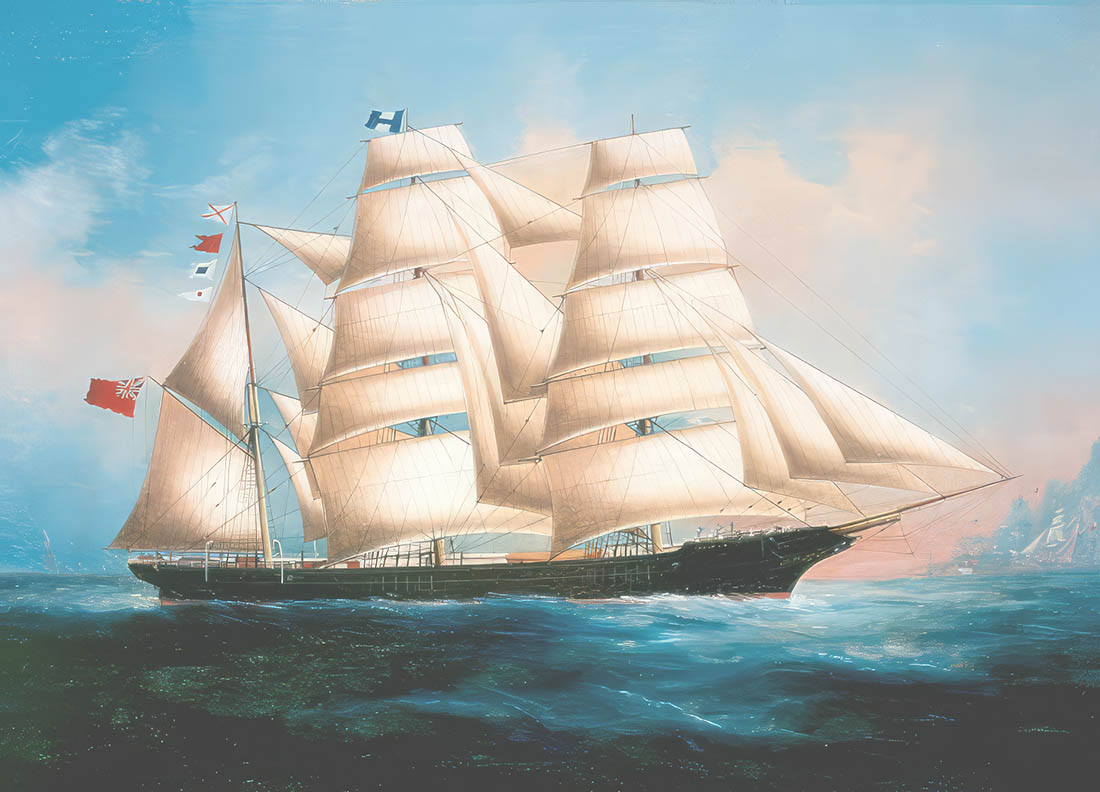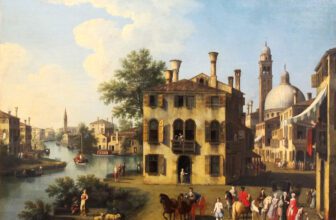
The Best Nautical Antique Paintings to Collect
A Collector’s Guide to Maritime Masterpieces
Nautical antique paintings have captivated collectors for centuries. They embody the spirit of exploration, the allure of the sea, and the craftsmanship of artists who translated maritime history onto canvas. Whether you’re an established art investor or a passionate admirer of seafaring history, collecting nautical antique paintings offers both aesthetic pleasure and long-term value.
This collector’s guide explores the best nautical antique paintings to collect, explains what to look for when buying maritime art, and highlights important artists, styles, and historical influences that make certain works highly desirable.
What Makes Nautical Antique Paintings So Valuable?
Nautical antique paintings hold a special place in the art world because they combine historical documentation, artistic skill, and emotional resonance. During the 18th and 19th centuries, often considered the golden age of maritime art, painters meticulously captured ships, naval battles, and serene coastal views.
Several factors drive their value:
Historical Authenticity – Paintings depicting real ships, famous voyages, or historical events often command higher prices.
Artistic Merit – Works by skilled marine artists who mastered water, light, and atmosphere remain timeless.
Condition and Provenance – The painting’s preservation and its ownership history significantly influence its market value.
Rarity – Limited surviving examples from certain periods or artists increase desirability.
Subject Matter – Paintings featuring well-known ships or dramatic seascapes tend to attract strong collector interest.
In short, nautical antique paintings blend the romance of the sea with historical storytelling, making them fascinating investments and conversation pieces.
The History of Nautical and Maritime Painting
To appreciate what makes the best nautical antique paintings worth collecting, it helps to understand their evolution.
Early Maritime Art (16th–17th Century)
The earliest nautical paintings appeared in Northern Europe, particularly in the Netherlands and England, during the age of exploration. Artists like Hendrick Cornelisz Vroom and Willem van de Velde the Elder pioneered marine art, documenting the rise of seafaring nations.
These early works were often meticulous ship portraits, accurate representations meant for wealthy merchants, ship owners, or naval patrons. They recorded vessels as symbols of national power and personal achievement.
The Golden Age (18th–19th Century)
By the 18th century, maritime painting reached new artistic heights. Artists like Claude Joseph Vernet in France and Thomas Luny in Britain brought drama and emotion to the sea. The period coincided with global naval expansion, giving rise to vivid depictions of trade, exploration, and naval warfare.
Romanticism further fueled the popularity of seascapes. Painters such as J.M.W. Turner infused maritime scenes with light, movement, and atmosphere, transforming them into emotional experiences rather than mere documentation.
The Modern Transition (Late 19th–20th Century)
As photography and modernism emerged, maritime painting evolved toward impressionism and abstraction. Artists like Montague Dawson continued traditional ship portrayals with dynamic realism, while others experimented with mood and color over strict accuracy.
For collectors, understanding these periods helps identify which paintings hold the greatest historical and artistic significance.
Categories of Nautical Antique Paintings Worth Collecting
Different collectors gravitate toward different maritime themes. Here are the main categories of nautical antique paintings that consistently attract interest and retain value.
1. Ship Portraits
Ship portraits are perhaps the most iconic form of nautical art. These detailed works celebrate individual vessels, often merchant ships, naval frigates, or whaling ships.
Collectible ship portraits are prized for:
Accuracy: Sails, rigging, and hulls were meticulously rendered.
Historical Context: Some depict named vessels with documented voyages.
Regional Schools: British, Dutch, and American ship portraitists developed distinctive styles.
Famous artists include Antonio Jacobsen, James E. Buttersworth, and Francis Holman. Their paintings often fetch high prices at maritime art auctions.
2. Naval Battles and War Scenes
Collectors fascinated by history gravitate toward naval battle scenes, which dramatize major conflicts such as the Battle of Trafalgar or the War of 1812.
These paintings combine historical narrative with technical accuracy, depicting ships in motion under cannon fire and stormy skies. Works by Nicholas Pocock or Thomas Whitcombe exemplify this thrilling sub-genre.
3. Coastal and Harbor Scenes
Not all maritime art centers on battle or adventure. Many nautical antique paintings portray peaceful harbors, fishing villages, and coastal life.
Collectors value these for their tranquil beauty and cultural documentation. Artists like Edward Moran and John Constable captured harbor activity with warmth and realism, often emphasizing light and weather conditions.
4. Exploration and Discovery Themes
Paintings depicting exploration, such as voyages to the Arctic, the Age of Discovery, or colonial expeditions, are deeply evocative. These works appeal to collectors who appreciate both history and adventure.
Scenes showing ships navigating icebergs, tropical islands, or unknown horizons evoke the human drive to explore.
5. Whaling and Merchant Marine Paintings
During the 18th and 19th centuries, whaling and merchant trade dominated maritime economies. Artists chronicled this world through paintings that show harpooners at work or cargo ships braving rough seas.
Collectors find these pieces valuable for their industrial and cultural significance, they reveal the economic backbone of seafaring societies.
Important Artists of Nautical Antique Paintings
A few key artists dominate the field of maritime art. Knowing their names helps collectors identify high-value works and authenticate potential acquisitions.
Willem van de Velde the Younger (1633–1707)
A Dutch master of seascapes, Van de Velde’s works are celebrated for their precision, luminous skies, and graceful ships. His ability to balance motion and serenity set the standard for marine painting.
Claude Joseph Vernet (1714–1789)
One of France’s most famous marine artists, Vernet specialized in romantic harbor scenes bathed in soft, atmospheric light. His works were highly sought after by European nobility.
Thomas Luny (1759–1837)
A prolific British painter, Luny is admired for his naval battles and harbor views. His mastery of color and perspective makes his paintings both historically informative and visually striking.
J.M.W. Turner (1775–1851)
Though not exclusively a maritime painter, Turner’s seascapes revolutionized the depiction of light and motion. Works such as The Fighting Temeraire capture the emotional power of the sea and remain icons of British art.
Montague Dawson (1890–1973)
Dawson is often called the last of the great marine painters. His 20th-century works combine modern technique with traditional subjects, sleek clipper ships, racing yachts, and turbulent seas. His paintings remain favorites among serious collectors.
The Investment Potential of Nautical Antique Paintings
Beyond their beauty, nautical antique paintings can be strong long-term investments. The market for maritime art remains stable due to limited supply and enduring historical appeal.
Key Investment Factors:
Historical Period: Paintings from the 18th and early 19th centuries often appreciate most.
Artist Reputation: Works by recognized marine masters retain strong market presence.
Condition and Restoration: Professionally restored paintings preserve more value than poorly treated ones.
Market Trends: Demand rises for paintings with connections to famous ships or historical events.
While returns vary, quality maritime art tends to outperform generic antique categories over decades, especially when collectors focus on rarity and authenticity.
Notable Nautical Paintings Every Collector Should Know
A few exemplary works serve as benchmarks for collectors aspiring to acquire or study maritime art.
“The Fighting Temeraire” (1839) – J.M.W. Turner
Depicting an aging warship towed to its final berth, this masterpiece symbolizes the transition from sail to steam. It remains one of Britain’s most beloved paintings and epitomizes the emotional depth of maritime art.
“A First-Rate Taking in Stores” – Thomas Luny
This painting showcases Luny’s attention to naval life’s everyday details, blending realism with elegant composition.
“The Battle of Trafalgar” – Nicholas Pocock
A historically precise and dramatic rendering of the decisive naval battle that secured Britain’s dominance at sea.
“Clipper Ship Flying Cloud” – Montague Dawson
Dawson’s dynamic brushwork captures the speed and grace of the legendary clipper. His works continue to set records at maritime art auctions.
“Storm off a Rocky Coast” – Claude Joseph Vernet
A romantic, atmospheric depiction of the sea’s power, demonstrating Vernet’s mastery of light and emotion.
The Influence of Nautical Paintings on Modern Art and Culture
Nautical themes have influenced modern design, cinema, and visual culture far beyond traditional art. Maritime imagery appears in interior décor, nautical photography, and contemporary marine painting.
Collectors who display antique seascapes in modern homes bridge past and present, celebrating craftsmanship while maintaining timeless appeal. Designers often integrate antique ship paintings into coastal or minimalist interiors, where their textures and muted tones evoke authenticity and adventure.
Moreover, maritime museums and exhibitions continue to attract large audiences, proving that our fascination with the sea remains undiminished.
Navigating the World of Nautical Antique Paintings
Collecting nautical antique paintings is a journey through time, an exploration of artistry, craftsmanship, and maritime history. From dramatic naval battles to serene harbor sunsets, each painting tells a story of human ambition and the eternal bond between humankind and the sea.
For serious collectors, these works offer not only visual splendor but also tangible heritage. They preserve the legacy of seafarers, explorers, and artists who captured the ocean’s majesty in paint.
Whether you seek a rare ship portrait by Antonio Jacobsen or an atmospheric seascape by Claude Joseph Vernet, the best nautical antique paintings embody a timeless appeal that transcends trends. Their combination of beauty, history, and investment value makes them some of the most rewarding artworks to own and cherish.




